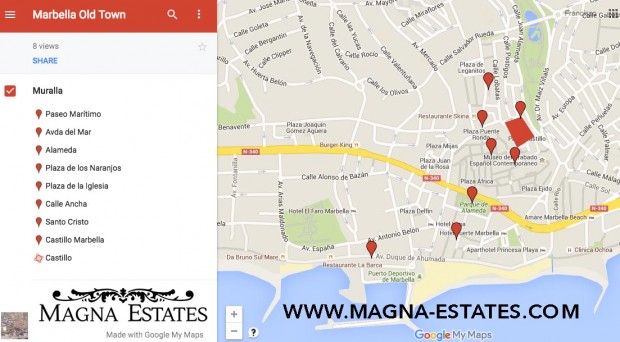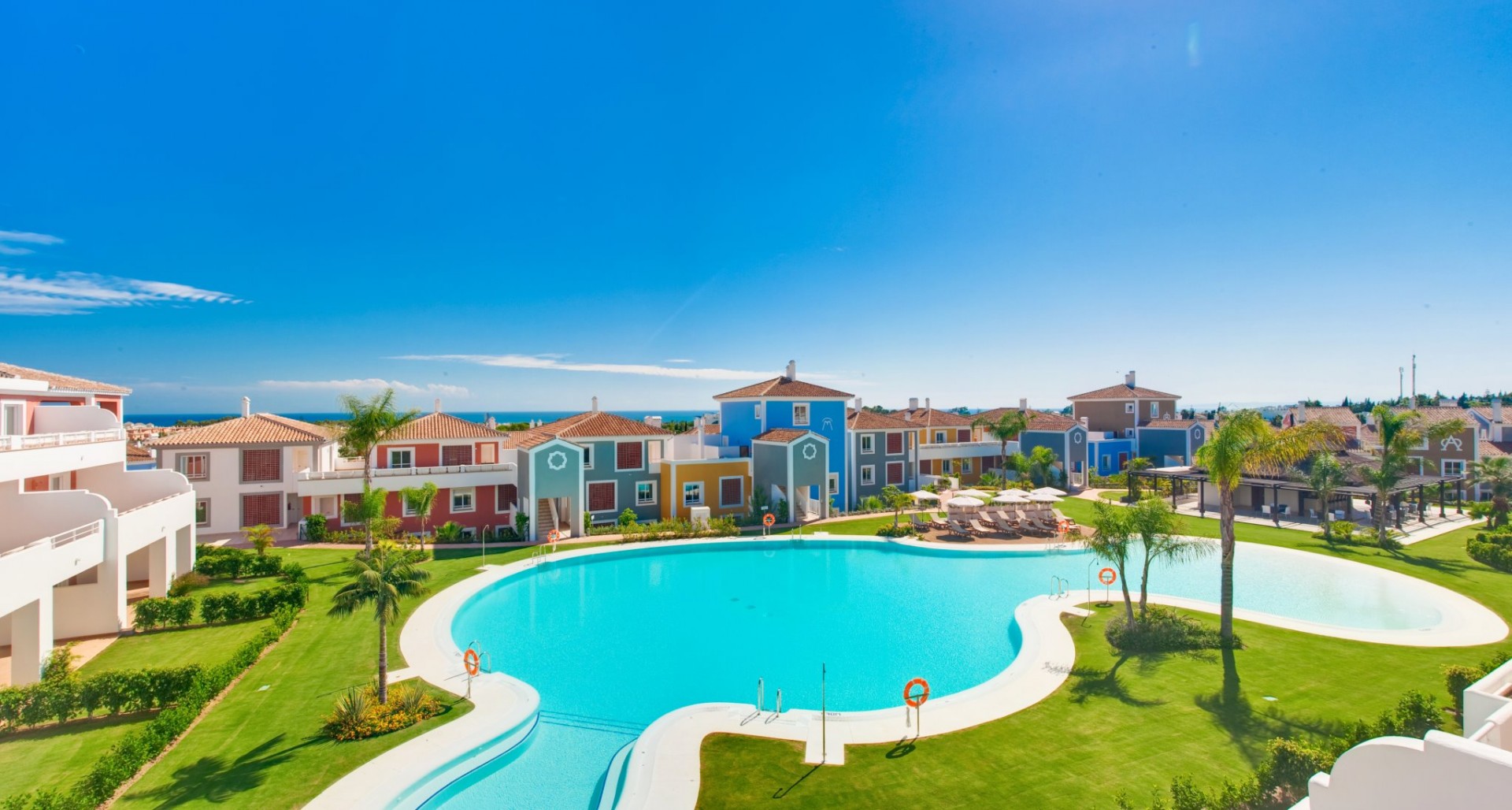When we think of Marbella, the image that automatically comes to mind is one of glamour, money, celebrities, luxury cars and super yachts, parties, and a wide sun and beach tourist offer.
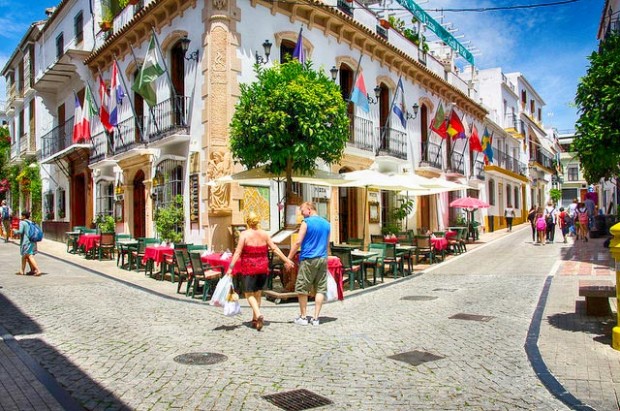
In addition to being one of the most important tourist destinations on the Costa del Sol, Marbella also has a beautiful typically Andalusian old town, with its winding narrow streets, white-washed houses and flowered balconies. Today we discover what to see in Marbella when strolling through its old town.
Marbella has a rich historical and archaeological heritage as it is a town of Roman origin. From its Arab period there are still remains of a fortress and a defense wall which protected the Muslim town, whereas the church of La Encarnacion, the Casa del Corregidor house, and San Juan de Dios hospital date from the Christian period.
Partially surrounded by a wall, Marbella town centre is a pedestrian area, so you have to park outside it (which is a complicated task though there are several car parks around the perimeter).
We can start our route from the beachfront and walk up a wide boulevard with marble floor, Avenida del Mar, with its fountains, cafes, restaurants, bars, benches and fabulous sea views …
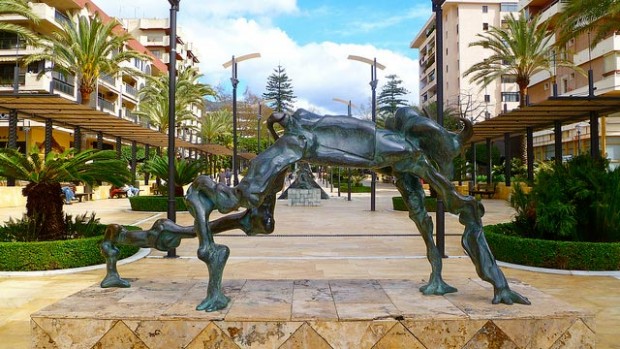
At the end of Avenida del Mar, a stairway takes us to the leafy Parque de la Alameda park, one of the most vibrant spots in Marbella. Flea markets and all sort of events usually take place there (for example, the local Christmas Nativity was located there). It is the oldest park in Marbella as the first trees were planted in the 18th century.
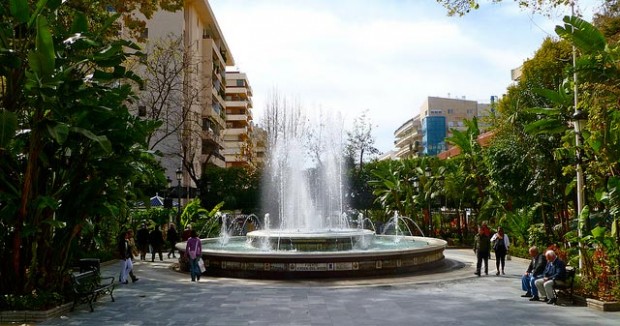
When we cross Avenida Ramón y Cajal we are right in Marbella old town. If we just walk around its narrow streets we soon get to Plaza de los Naranjos square, one of the most emblematic sights and the actual hub of the city. It takes its name from the numerous orange-trees that line it and is filled with lively open-air cafes, bars and restaurants.
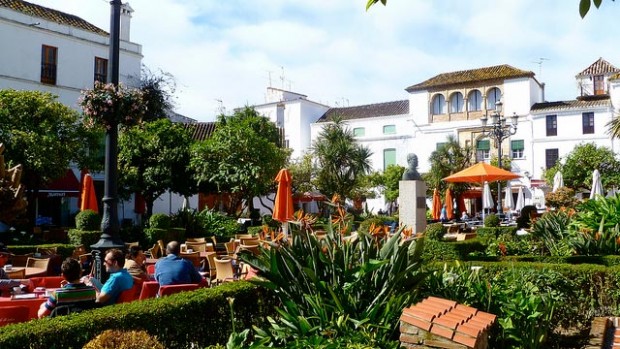
The Plaza de los Naranjos was built at the end of the 15th century and it represents a historical change for the city – the transition from Arab to Christian culture, becoming the administrative and civil centre during the Reconquest of Spain. In the centre of square there is a statue of King Juan Carlos of Spain and a beautiful Renaissance fountain.
Flanked by the typical Andalusian white houses, in the plaza there are also three of the most representative buildings in Marbella – the Casa Consistorial (Mayor’s house, built by order of the Catholic Monarchs), the Santiago hermitage (the oldest religious building in the city, dating from the 15th century), and the Casa del Corregidor (Chief Magistrate’s house, featuring a stone façade combining Gothic and Renaissance elements).
Not far from there it is the Plaza de la Iglesia, a square with the statue of Saint Bernard (patron saint and life major of Marbella) opposite the imposing façade of Santa María de la Encarnación church.
Its size, and specially its naves and central doom’s height, make the church look more like a cathedral than a church. Santa Maria de la Encarnación has a basilica floor plan with several side chapels, and most of its paintings and images were destroyed in 1936.
If we follow the ruins of the Arab wall and castle (10th century) we get to Calle Ancha, the main road which used to be the old access and exit to the city through the Ronda gate. It is a beautiful majestic street where the wealthiest citizens used to settle down, attested to by the coat of arms on their home facades, great balconies and exceptional decoration. One of the houses worth mentioning is Casa de Correa (1763), as well as that next to the Santo Cristo de la Veracruz hermitage (16th century).
CLICK ON THE MAP BELOW TO SEE THE INTERACTIVE ROUTE OF MARBELLA OLD TOWN.
Whether you are or live in Marbella, you cannot miss one of the most beautiful old quarters in Andalusia, that of Marbella, as a contrast to the beach and luxury we all already know.
Source: http://lalaviajera.com/
